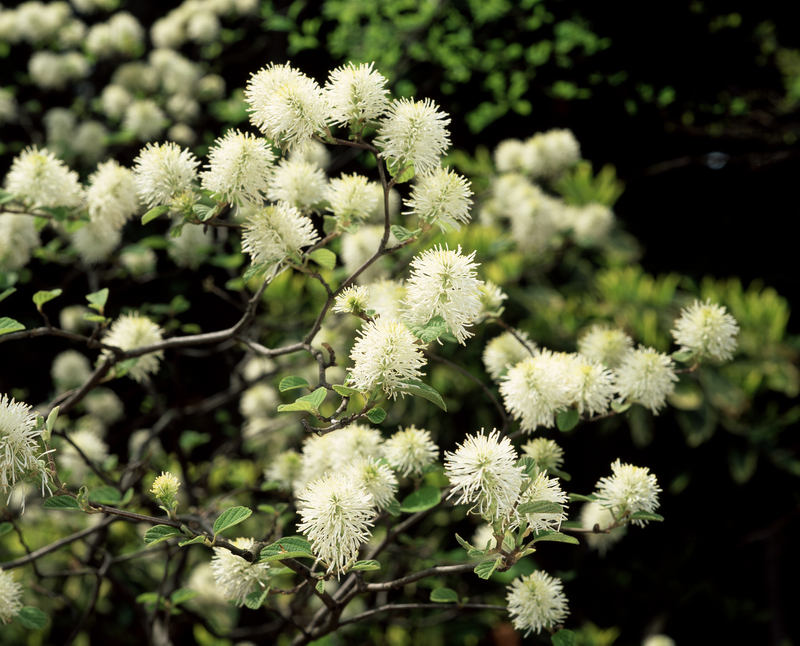Developing a Wind-Resistant Garden Oasis
Posted on 25/06/2025
Developing a Wind-Resistant Garden Oasis: Comprehensive Strategies for a Thriving Landscape
A wind-resistant garden oasis is not just a dream for homeowners in breezy regions--it's an achievable reality. Designing a landscape that can withstand strong winds while remaining beautiful and tranquil requires intentional planning, plant selection, and clever design solutions. Let's dive into comprehensive techniques and practical tips for developing a wind-resistant garden oasis that flourishes year-round.

Understanding the Impact of Wind on Gardens
Wind can be both a friend and foe in the garden. While gentle breezes aid in pollination and temper summertime heat, strong or persistent winds:
- Cause soil erosion
- Dry out soil and plants, leading to water stress
- Break stems and snap branches
- Damage delicate flowers and foliage
- Increase salt spray damage near coastal areas
*By recognizing how wind challenges your landscape, you can adopt strategies that transform your outdoor space into a true wind-resistant sanctuary.*
Analyzing Your Garden's Wind Patterns
Before you begin constructing your wind-resistant garden oasis, it's crucial to observe and analyze the wind dynamics in your specific area. Here's how you can evaluate your space:
- Check prevailing wind directions--use a windsock or watch tree growth patterns.
- Assess wind intensity throughout seasons to identify problem areas.
- Note microclimates--even in windy regions, certain spots naturally offer more protection.
Understanding the natural wind flow across your property is the foundation for designing effective wind barriers and choosing the best plant placements.
Designing Windbreaks: Your First Line of Defense
What Are Windbreaks?
Strong windbreaks are essential in any windproof garden design. These are features--natural or structural--that reduce wind speed and turbulence in exposed areas.
Types of Windbreaks
- Living Windbreaks: Rows of trees, dense shrubs, or tall grasses.
- Structural Windbreaks: Fences, walls, trellises, or screens.
- Mixed Windbreaks: Combinations of vegetation and structures for layered protection.
Well-designed windbreaks not only protect vulnerable plants but also create cozy microclimates, enabling a lush and diverse garden landscape.
Planning and Positioning Effective Windbreaks
- Orient windbreaks perpendicular to the prevailing wind.
- Aim for windbreak length that stretches at least ten times the height of your tallest barrier.
- Layer windbreaks: Plant a mix of tall evergreens, deciduous trees, and dense shrubs in rows--staggering them for maximum disruption of the wind flow.
- Avoid solid walls--they can cause wind turbulence. Instead, opt for permeable windbreaks (like louvered fences or layered planting) that reduce wind speed gradually.
Layered planting not only ensures wind protection but also provides dynamic visual interest throughout the year.
Choosing Wind-Resistant Plants for Your Garden Oasis
Selecting plant varieties that can withstand strong gales is essential for a successful wind-resistant garden. Here's what to consider:
Traits of Wind-Tolerant Plants
- Narrow, flexible leaves that bend without breaking
- Low, dense growth habits
- Strong, anchoring root systems
- Native or adapted to your region's conditions
Some wind-resistant plant options thrive even in exposed sites and add year-round interest.
Top Plant Choices for Wind-Resistant Garden Landscapes
- Evergreen Trees: Pines, junipers, conifers, and holly
- Deciduous Trees: Alder, hawthorn, birch, willow, and poplar
- Shrubs: Escallonia, viburnum, cotoneaster, boxwood, and pittosporum
- Grasses and Perennials: Muhlenbergia, switchgrass, sedges, lavender, Russian sage, and yarrow
- Climbers: Honeysuckle, ivy, and clematis
Grouping wind-resistant species together not only contributes to a robust barrier, but also fosters a garden with year-round interest and habitat diversity.
Soil Protection and Erosion Control
Wind can strip away topsoil and nutrients, quickly depleting garden health. For a truly wind-resistant garden oasis, prioritize soil stabilization:
- Add mulch--coarse wood chips, gravel, or seaweed to anchor the soil and reduce moisture loss.
- Incorporate ground covers--like creeping thyme, vinca minor, or sedum to blanket bare patches.
- Plant in swales or terraces--these provide shelter and minimize washout on slopes.
- Consider windbreak hedges along at-risk edges for maximum soil protection.
*Healthy, protected soil is the springboard for every successful wind-resistant landscape.*
Garden Layout and Microclimate Creation
Strategic Garden Zoning
Design your wind-resistant garden oasis by dividing the space into distinct "microclimates":
- Sheltered core: The heart of your garden, surrounded by living or structural windbreaks. Place delicate or exotic plants here.
- Semi-exposed zones: Ideal for moderately wind-tolerant shrubs, raised beds, or seating areas protected by screens.
- Exposed perimeters: The outermost area for robust trees, tough shrubs, or ornamental grasses that can absorb the brunt of incoming wind.
*Zone planning maximizes both plant protection and enjoyment of your garden oasis throughout every season.*
Hardscape Solutions for Wind Management
- Install latticed fences or pergolas with climbing plants to deflect wind rather than block it abruptly.
- Stone walls and boulders serve dual purposes--break wind and add textural focal points.
- Water features, such as ponds or fountains, help humidify and cool dry windblown air.
Blending natural and structural elements results in an attractive, multi-functional landscape that is as practical as it is soothing.
Watering Techniques in Wind-Exposed Gardens
Wind exposure accelerates evaporation and draws moisture from both soil and plant tissue, so adopting smart watering routines is essential:
- Drip irrigation minimizes surface water loss and directs moisture precisely to the root zones.
- Deep watering encourages plants to grow deeper, wind-secure roots.
- Mulching not only locks in moisture but also helps moderate soil temperature and structure.
Consistent, targeted irrigation keeps your wind-resistant garden plants lush and resilient.
Wind-Resistant Structures and Outdoor Living Features
If your vision for a wind-resistant oasis includes outdoor seating, pergolas, or cooking spaces, build in protection from prevailing breezes:
- Orient patios or decks behind thick hedges or structures.
- Add retractable wind screens or plant tall containers for seasonal shelter.
- Use sturdy, weather-resistant furniture and secure lightweight decor against surprise gusts.
Thoughtfully designed outdoor living spaces greatly enhance the comfort and usability of your wind-resistant garden oasis--even on blustery days.
Maintenance for a Long-Lasting Wind-Resistant Garden
- Regularly prune trees and shrubs to maintain strong, flexible frameworks.
- Remove dead branches promptly to reduce breakage during storms.
- Check and amend soil with compost or organic fertilizers to encourage deep, wind-resistant roots.
- Inspect hardscapes and windbreaks for damage and repair as needed.
*Consistent care ensures your wind-resistant garden oasis stays healthy and beautiful year after year.*
Quick Tips: Do's and Don'ts for Wind-Resistant Gardens
- Do plant in dense, layered arrangements rather than single rows.
- Do mulch and use ground covers to combat erosion.
- Do include multiple lines of defense--both living and structural.
- Don't rely on solid walls exclusively; allow air flow to reduce turbulence.
- Don't plant tall, brittle species in exposed areas.
Inspirational Ideas for Your Wind-Resistant Garden Oasis
Seeking creative ways to personalize your wind-resistant garden oasis? Here are some inspiring ideas that combine function and beauty:
- Mediterranean Courtyard: Use olive trees, rosemary, lavender, and stone walls to evoke a sun-drenched, wind-wise retreat.
- Coastal Haven: Opt for sea buckthorn, beach grasses, and salt-tolerant succulents behind driftwood screens for a seaside escape.
- Desert Oasis: Choose hardy yucca, ornamental grasses, mulched beds, and gabion walls for a modern, low-water windbreak.
- Woodland Shelter: Layer native evergreens, dogwood, viburnum, and ferns for a lush, shady hideaway protected from the wind.
Use these themes as jumping-off points for your own unique wind-resistant landscaping project!

Frequently Asked Questions About Wind-Resistant Gardens
Can any plant survive in high wind?
Not all plants cope well with wind. Focusing on those with strong, flexible stems, small leaves, or adaptations to windy habitats offers the best chance of success.
What is the best type of windbreak: living or structural?
A combination of living and structural windbreaks is most effective. Plants offer ecological benefits and gradual wind dispersal, while structures provide instant, customizable shelter.
How do I protect a young garden from wind damage?
Start with temporary shelters, such as garden fleece or screens, until windbreak hedges and trees become established. Anchor all young plants with staking and gradually wean them off as roots take hold.
How can I stop wind erosion in my garden beds?
Dense planting, mulching, and the use of ground covers are effective methods for stopping wind erosion and maintaining soil health in exposed beds.
Conclusion: Cultivating Your Ultimate Wind-Resistant Garden Oasis
Every outdoor space is unique, but with thoughtful planning and the right strategies, you can transform even the windiest location into a calm, thriving sanctuary. By combining wisely chosen windbreaks, hardy plant selections, smart irrigation, and resilient design, your wind-resistant garden oasis will reward you with beauty, peace, and year-round enjoyment for years to come.
Ready to develop your wind-resistant oasis? Start designing today, and watch your resilient retreat take root!


